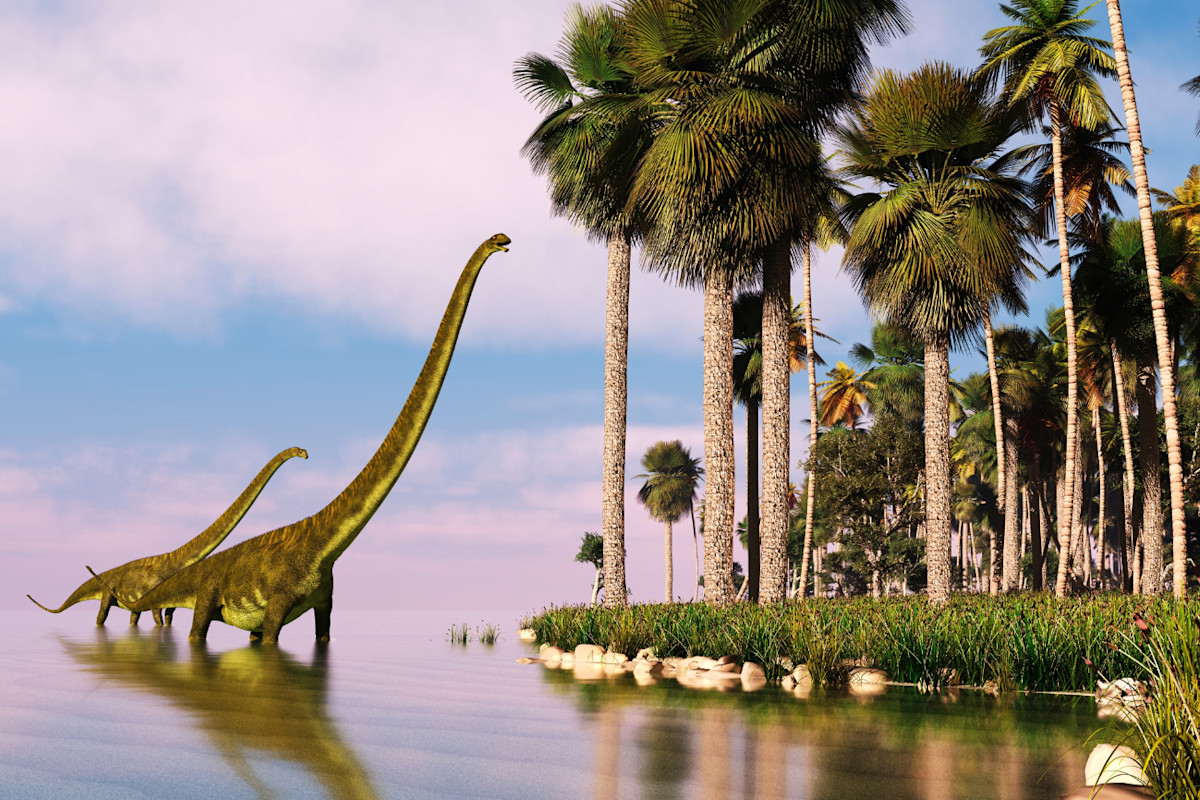Table of Contents
A Complete Dinosaur Timeline to Extinction: How Long Did They Roam Earth?
Dinosaurs roamed Earth for over 165 million years, evolving through the Triassic, Jurassic, and Cretaceous periods before their sudden extinction. This article breaks down the complete dinosaur timeline, highlights key evolutionary stages, and explains how long dinosaurs ruled the planet. It includes updated data, facts, and a brief FAQ to provide a clear, engaging overview of dinosaur history.
For over 165 million years, dinosaurs ruled the Earth—evolving, thriving, and dominating every corner of the prehistoric world. Their incredible story unfolds across three dramatic geological periods: the Triassic, Jurassic, and Cretaceous—collectively known as the Mesozoic Era.
Thanks to fossil discoveries and decades of scientific research, we now have a clearer picture of the dinosaur timeline, from their humble beginnings to their sudden extinction. In this article, you’ll explore how dinosaurs first appeared, how they evolved into towering giants and fierce predators, and what ultimately caused their downfall.
Follow the full timeline of dinosaur history—from the dawn of the Triassic to the final days of the Cretaceous—and uncover the key events that shaped their rise and fall.
How Long Did Dinosaurs Really Rule the Earth?
Imagine a world where towering reptiles ruled for over 100 times longer than humans have existed. Dinosaurs weren’t just fleeting prehistoric creatures—they dominated Earth for nearly 165 million years before their sudden extinction. But when exactly did dinosaurs appear, and how did their reign end?
This article dives into the complete dinosaur timeline—from their first steps in the Triassic to their extinction at the end of the Cretaceous. You’ll learn about the three major periods of dinosaur evolution, when they lived, how they diversified, and what ultimately led to their downfall.
1. The Beginning: Dinosaurs in the Triassic Period (252–201 Million Years Ago)
Dinosaurs first appeared during the late Triassic period, a time when Earth was recovering from the largest mass extinction in history.
Key Facts:
- First Dinosaurs Appeared: ~230 million years ago
- Climate: Hot and dry, with vast deserts
- Continent: Pangaea (supercontinent) still intact
- Famous Early Dinosaurs: Eoraptor, Herrerasaurus
What Happened:
Small, bipedal dinosaurs emerged and began to dominate terrestrial ecosystems. However, they shared Earth with other reptiles like crocodilian ancestors and early mammals.
2. The Age of Giants: Jurassic Period (201–145 Million Years Ago)
The Jurassic marks the true rise of dinosaurs, especially large herbivores and apex predators.
Highlights:
- Dinosaur Diversity Exploded
- Continents Began to Split
- Lush, Tropical Environment
- Famous Dinosaurs: Brachiosaurus, Stegosaurus, Allosaurus
Significance:
The Jurassic saw the emergence of massive sauropods and the evolution of flying reptiles (pterosaurs) and early birds.
3. The Peak and Fall: Cretaceous Period (145–66 Million Years Ago)
The Cretaceous was the final and most diverse phase of the dinosaur era.
Notable Features:
- Flowering plants evolved
- Dinosaurs reached peak diversity
- Famous Dinosaurs: Tyrannosaurus rex, Triceratops, Velociraptor
- Climate: Warm, high sea levels, diverse ecosystems
Extinction Event:
About 66 million years ago, a massive asteroid impact near modern-day Mexico (Chicxulub crater) caused sudden mass extinction, wiping out all non-avian dinosaurs.
4. Timeline Summary: How Long Did Dinosaurs Roam Earth?
| Period | Timeframe (Million Years Ago) | Key Developments |
|---|---|---|
| Triassic | 252–201 | First dinosaurs appear |
| Jurassic | 201–145 | Growth in size, diversity expands |
| Cretaceous | 145–66 | Peak of evolution, sudden extinction |
Total Time Dinosaurs Existed: About 165 million years
By comparison, modern humans have only existed for about 300,000 years—a tiny fraction of the time dinosaurs roamed.
5. What Caused the Mass Extinction of Dinosaurs?
The prevailing theory involves a 6-mile-wide asteroid that struck Earth, causing:
- Mega-tsunamis
- Wildfires
- Sun-blocking dust clouds
- Global cooling and food chain collapse
New research suggests volcanic activity and changing sea levels may have contributed too.
6. Did Any Dinosaurs Survive?
Yes—but only the ones that evolved into birds.
Today’s birds are considered modern avian dinosaurs, surviving and evolving after the extinction event.
7. Fun Facts and Current Discoveries
- Over 1,000 species of non-avian dinosaurs have been identified.
- China, Argentina, and the U.S. are hotspots for fossil discoveries.
- New fossils are found every few weeks, adding more to our understanding.
- The largest known dinosaur is Argentinosaurus, estimated to weigh up to 100 tons.
FAQs
1. When did dinosaurs first appear?
About 230 million years ago, during the late Triassic period.
2. When did dinosaurs go extinct?
Roughly 66 million years ago, at the end of the Cretaceous period.
3. How long did dinosaurs live on Earth?
They ruled for approximately 165 million years.
4. What caused their extinction?
A massive asteroid impact, likely combined with volcanic activity and climate shifts.
5. Are any dinosaurs alive today?
Yes—birds are modern descendants of certain theropod dinosaurs.
6. What’s the biggest dinosaur ever found?
Argentinosaurus, a massive sauropod, is one of the largest discovered
Conclusion
Dinosaurs weren’t a brief chapter in Earth’s history—they were the dominant life forms for over 165 million years. From the modest beginnings in the Triassic to the giants of the Jurassic and the incredible diversity of the Cretaceous, their story is one of resilience, adaptation, and ultimately, extinction.
Understanding their timeline not only gives us a sense of scale about Earth’s history—it also reminds us of the fragility of life and the power of natural forces.

